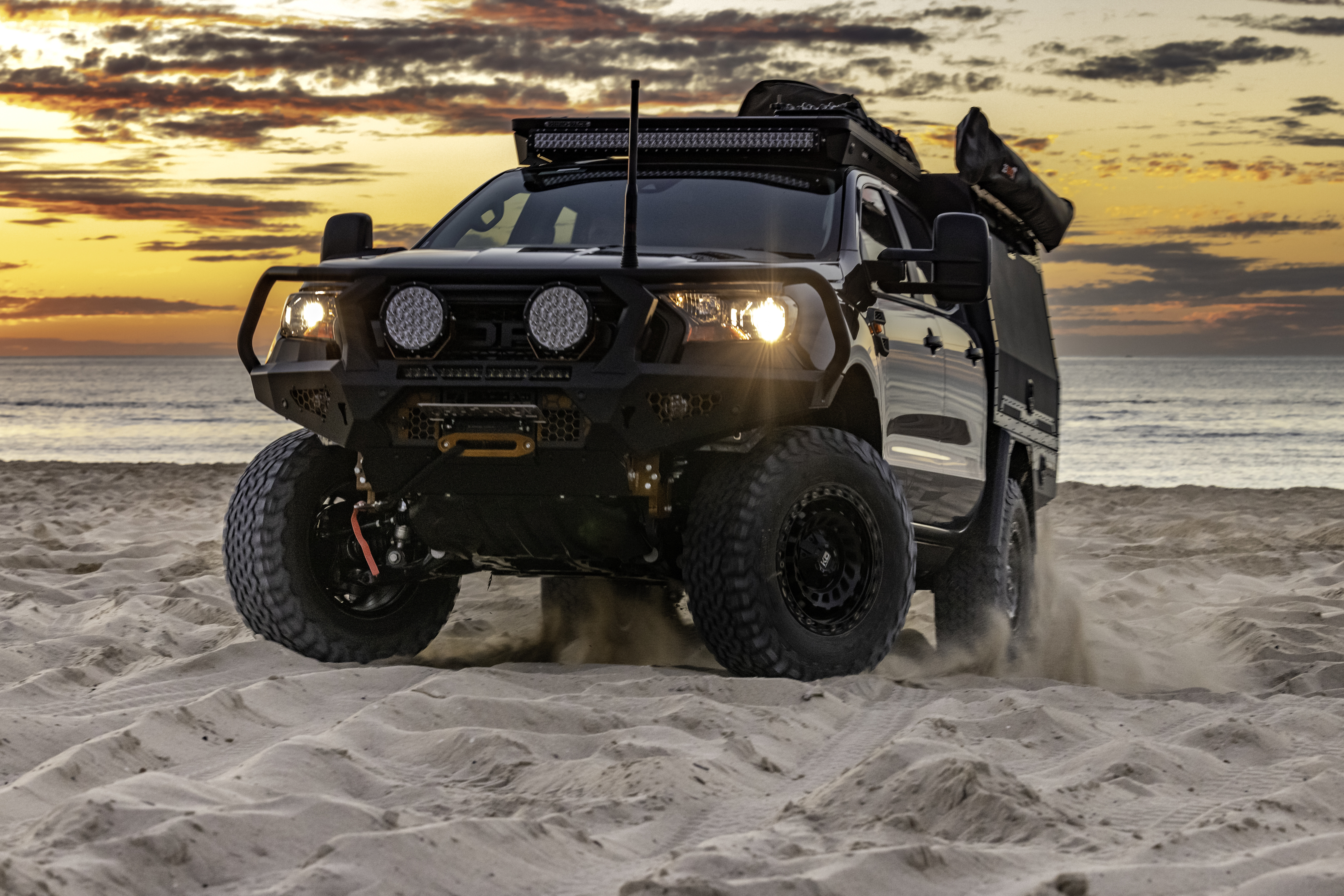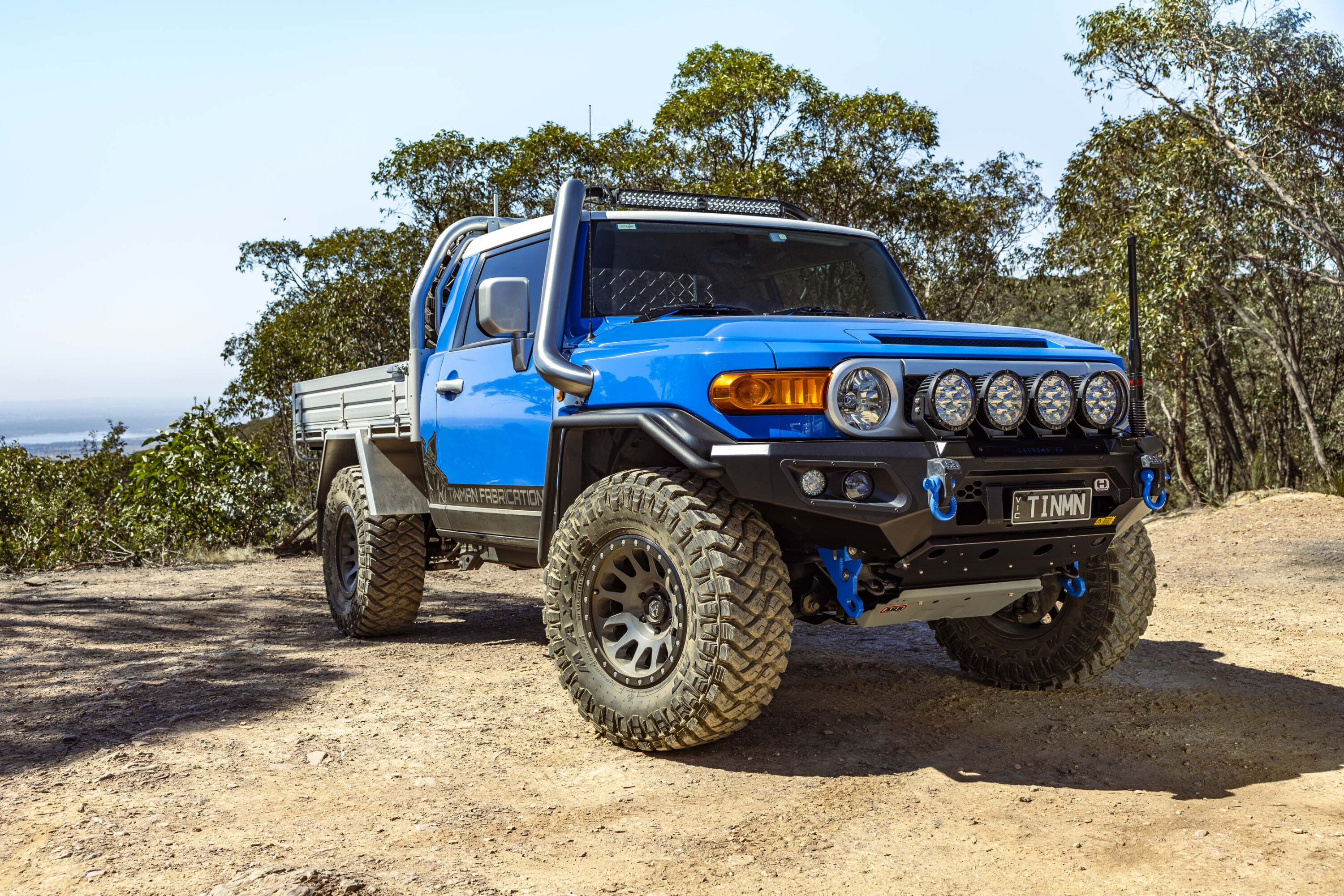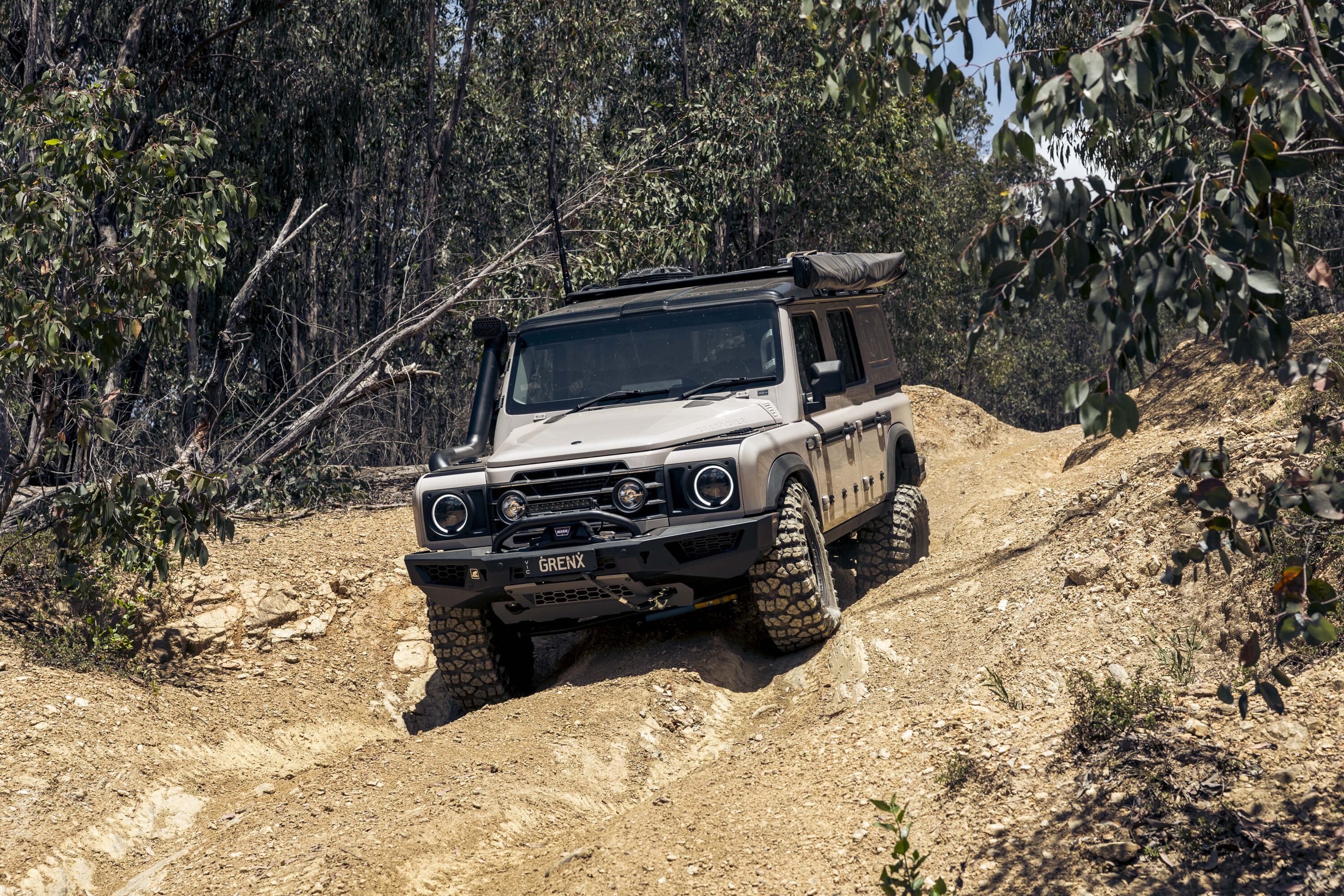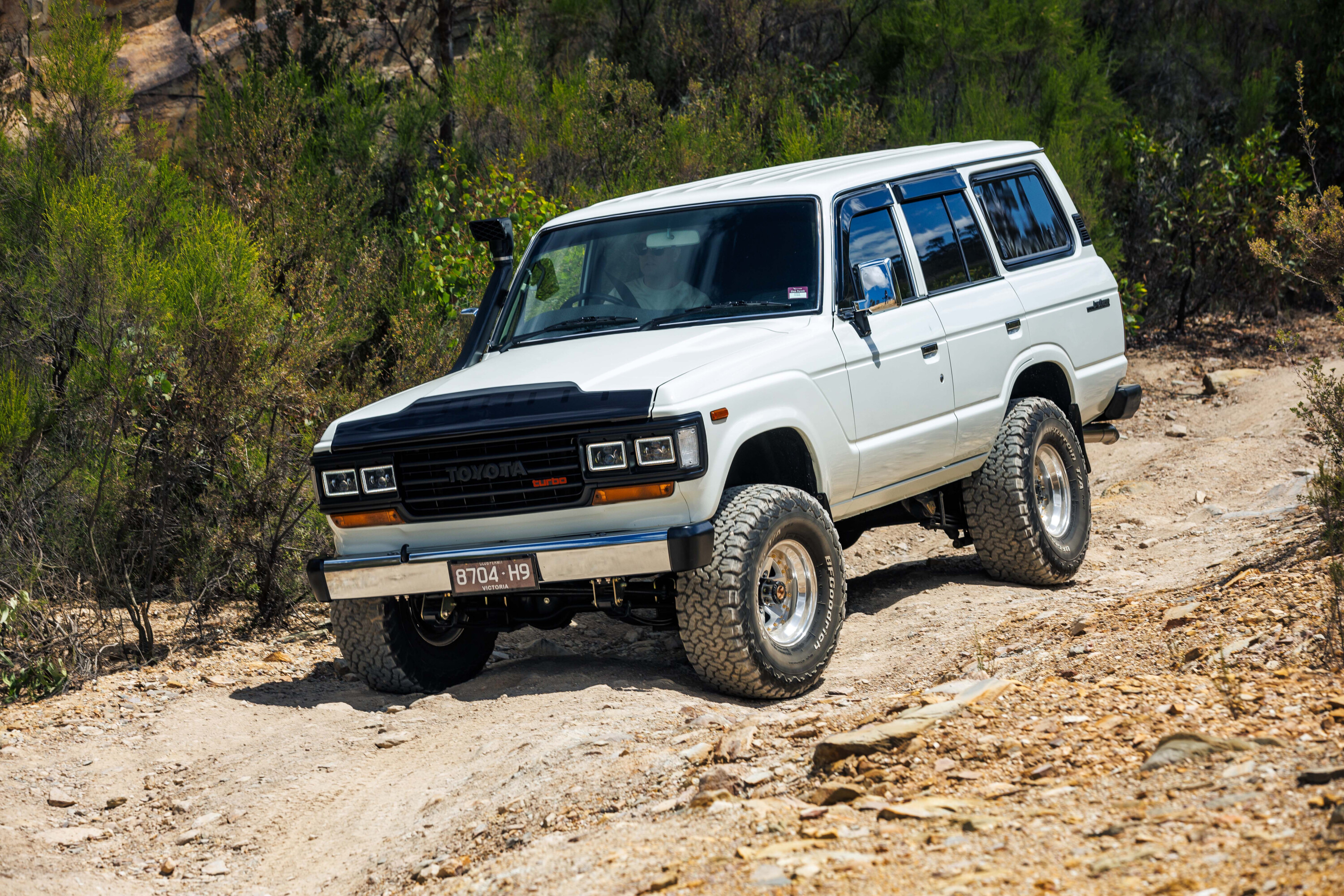We’ve seen them on every trip to the local 4×4 spot. Dual-cab utes with a fresh aluminium canopy proudly bolted to the rear chassis mounts. The fact that a well set-up canopy makes sense isn’t lost on most, and there’s no shortage of companies out there with a drop saw and a spool gun ready to meld one together for you. Jimmy Egan decided he could make one better, so after assembling a team and putting in a solid 10 months of researching, development and testing, he swung the doors open at Core Off-Road in the Western Australian coastal town of Rockingham.
That was around 14 months ago, and it all revolves around clever thinking, and the use of HDPE or High Density Polyethylene, which along with an aluminium base and decorative trims make up the core (so to speak) element of the bespoke canopy-building business. Being a super-strong plastic (see more details below) that Jimmy has been able to register a patent to weld and mould, Core is able to create canopies highly resistant to damage and next to nil corrosion.
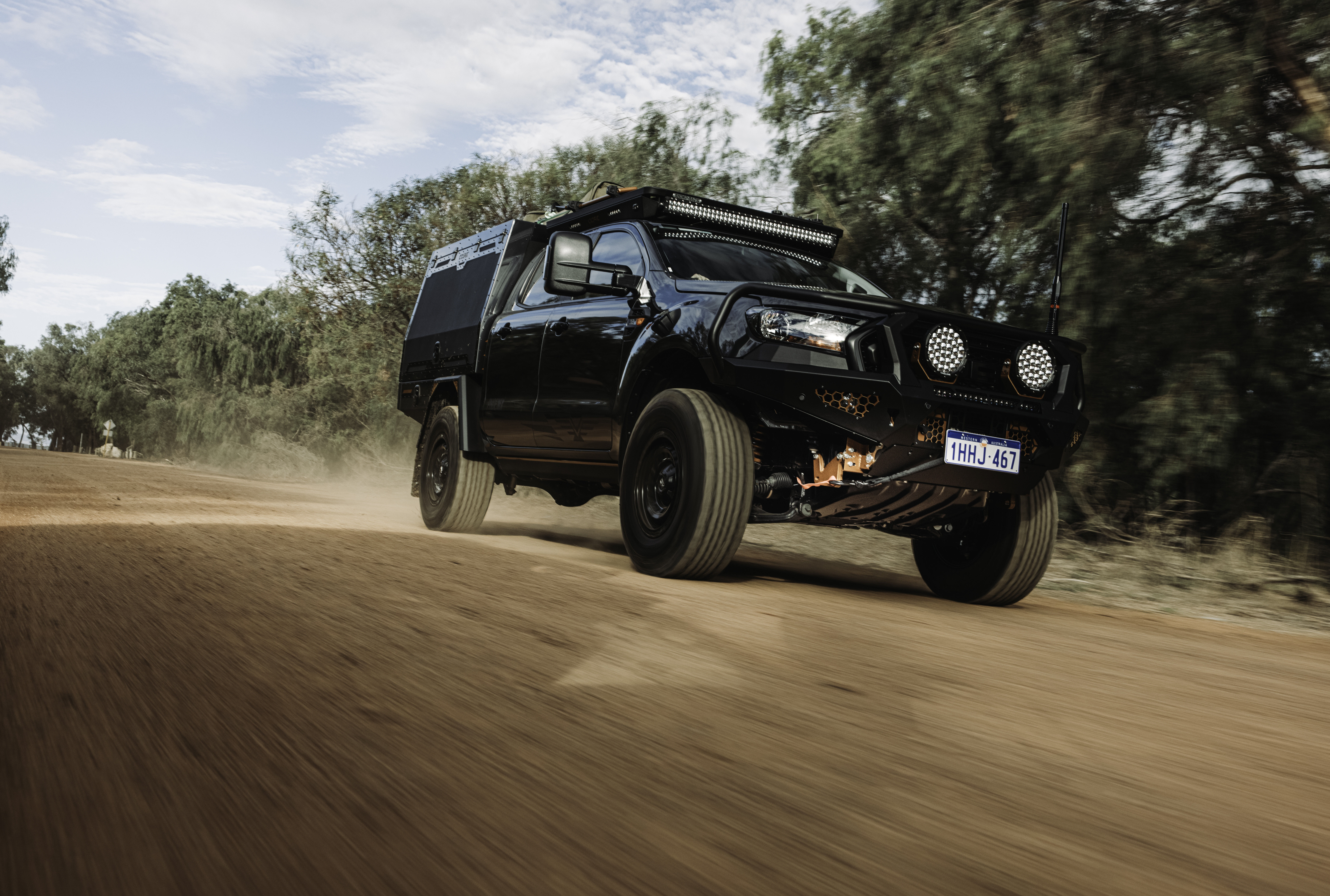
“It all started when I wanted to make a new canopy for ‘The General’, my army green 79 series,” says Jimmy. “Personally, I’d worked with aluminium with our fabrication workshop in Queensland for years, and I just wasn’t happy with the final product that aluminium gave.”
Suffice to say the team at Core have come up with a clean method of putting a canopy together, with clean being the operative word. “One thing we’ve focused on with our canopies purely from previous experience, is cleaning,” adds Jimmy. “There’s no nooks and crannies where dirt can sit or mud can get stuck. One area of interest is the rear tail-light area where we’ve designed it to be easily washed out or cleaned with a brush without smashing your knuckles.” Maintaining the clean look are a set of six LED Autolamps Maxilamp round reflector combo lights, which have had hexagonal recesses CNC-machined into the HDPE beaver panel for mounting. Central to the rear lights is a 950mm trundle drawer with top cover allowing for extra bench space when camped.
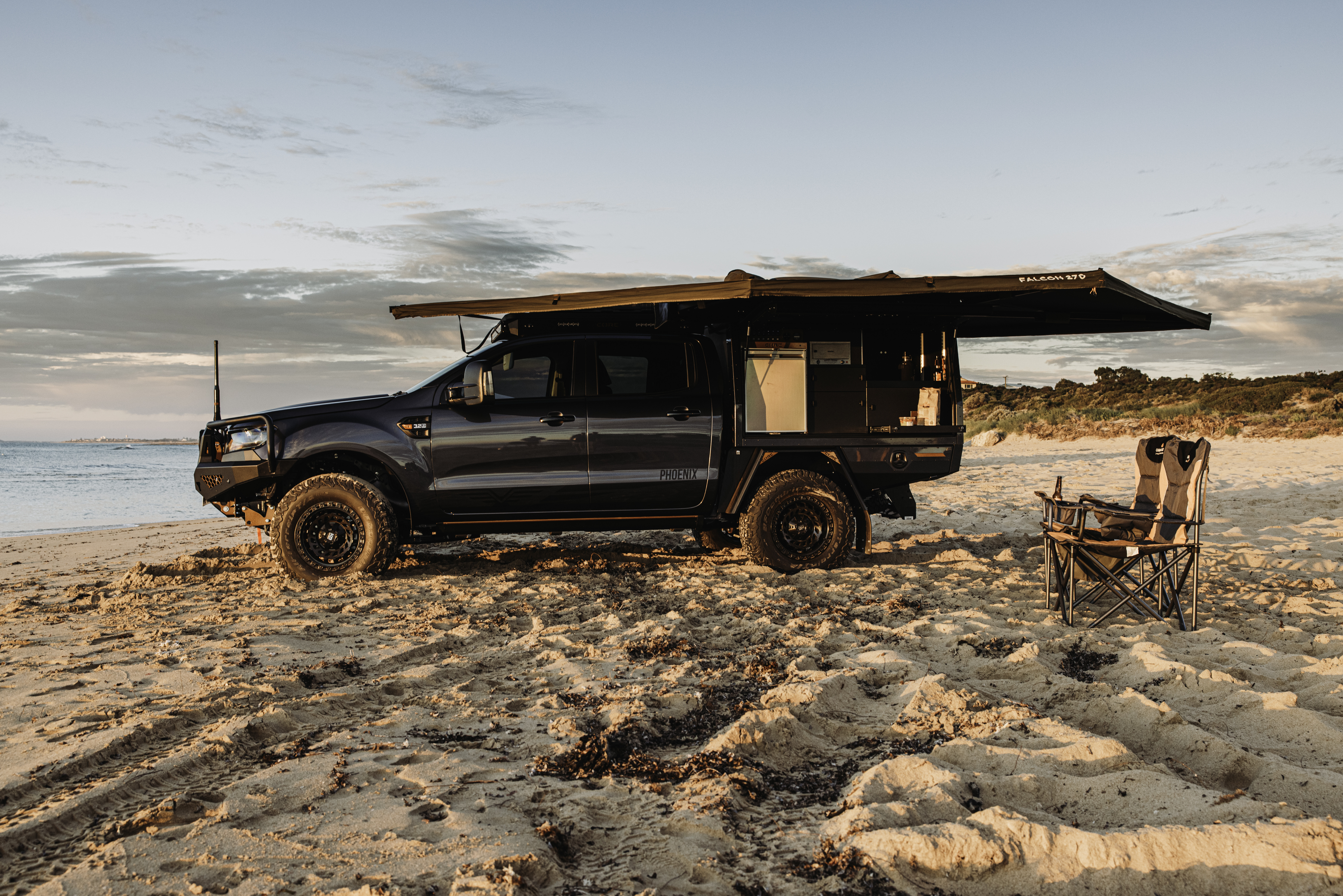
The Phoenix GTX canopy you see attached to the Ranger here is a sub-range of turnkey canopies with four models. These being the Workmate, GT, GTX and the top of the line GTU. With Core being a full-service workshop, its canopies are only fitted in-house and signed off on with all accessories already installed. Just drive your ute into its workshop and Core will give it back to you fully wired, plumbed, accessorised, and ready to go. With a host of top-shelf standard and upgrade options available across the range, like water heaters, storage baskets, compressors, roto-moulded water tanks, or pull-out pantries, it’s just a matter of deciding what you can’t do without. The layout is designed to not waste a bit of space inside, with one of the many clever ideas being the integration of a complete central-locking system. While locking the main canopy doors is an industry standard, the Core line of canopies also locks the trundle drawer and under-tray toolboxes. In addition, the fuel filler cap is located inside one of the tapered toolboxes, so once closed and locked there’s no access to your fuel cap to dirt or sticky fingers.
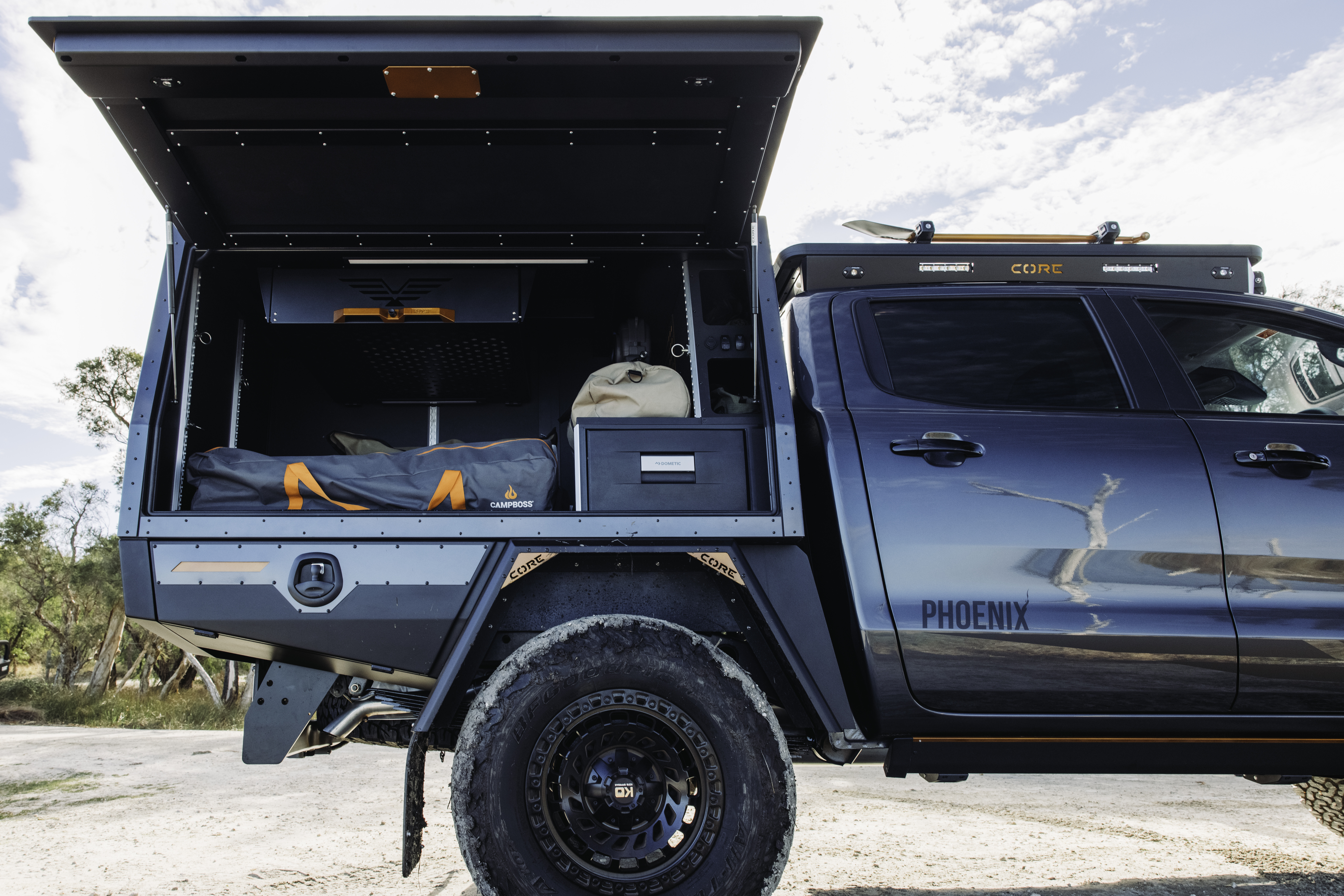
The GTX on the Ranger features a Dometic CRX 80L stand-up fridge as standard. The 125amp/h Enerdrive lithium battery keeps things going when parked up, and it’s supported by the DC2DC+ multistage battery charger also from Enerdrive – power is sent through Core’s custom-built switch and breaker panel. This contains the Enerdrive ePro Plus battery monitor readout, alongside a Fusion BB100 Bluetooth stereo system, with low-profile speakers located on the underside of the passenger-side canopy door.
Wanting to create a promo vehicle to demonstrate its products, the Meteor Grey Ranger you see here was screwed together in-house, but it didn’t last long in the hands of the team, being snapped up at its first camping show. “It’s worked well for us so far, where we take two, maybe three brand-new vehicles to a show fully kitted out,” Jimmy explains. “So the customer can walk in, have a look, put down a deposit and basically drive away on Monday.” The 2020 XLS Sport Ranger with Tech Pack here was chosen as it’s what a lot of Core’s Ranger customers go with. “It comes with all the bells and whistles and nothing you need to tear off, and a lot of it like door handles and grilles are already blacked out.”
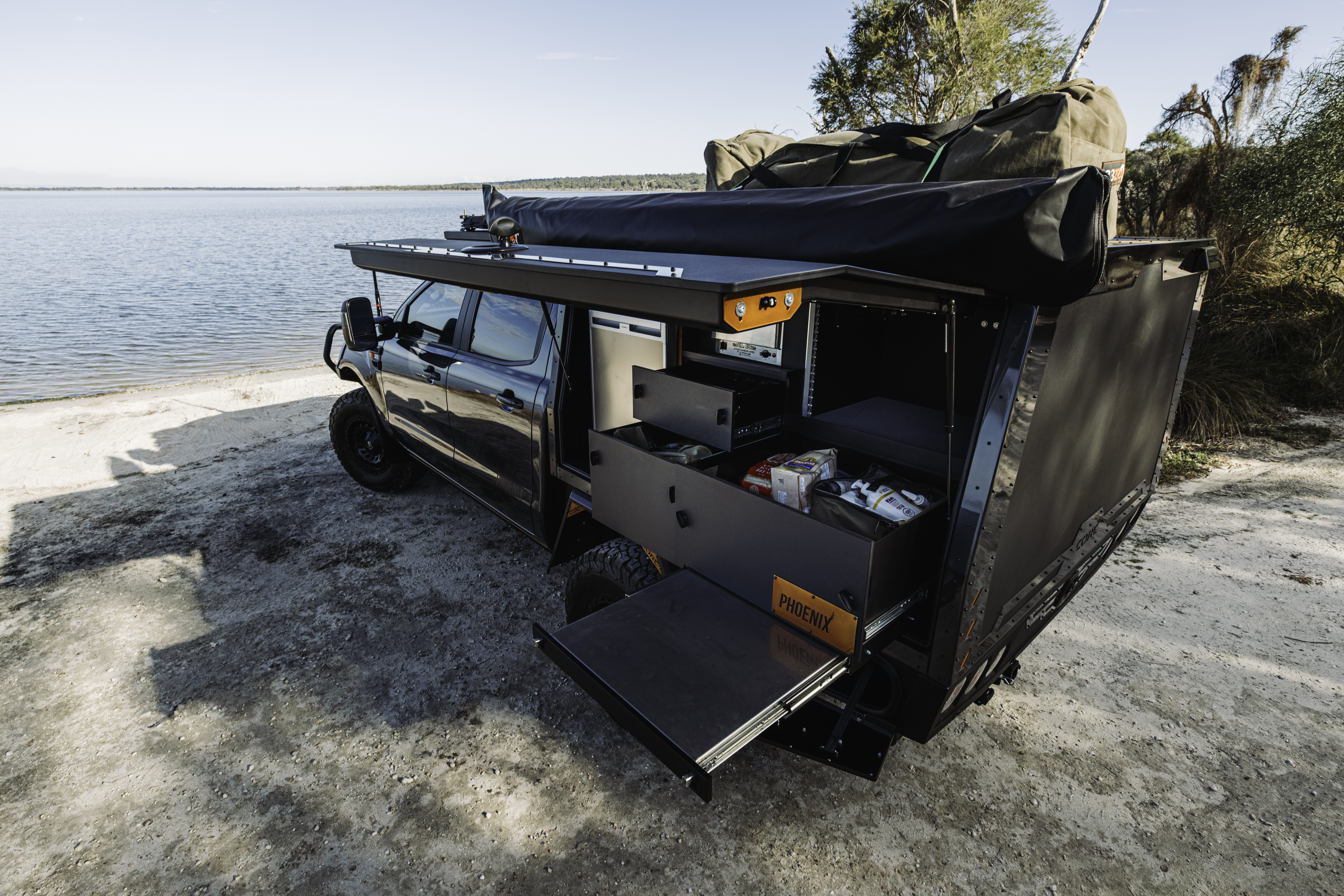
Upgrading the frontal protection is an Offroad Animal Toro bar which was pulled apart and colour-coded with orange accents, while a pair of Teralume Icon 8.5-inch lights had their brackets powder-coated to match. These were bolted down above a Stedi 21-inch STK3 light bar peaking out from behind the (you guessed it) colour-coded centre grille and the Carbon 12,000lb winch’s fairlead, while the recovery points received the same lick of colour too. Rounding out the bullbar is a GME 2.1db Radome antenna sending and receiving through an GME XRS 370C4P two-way inside the cabin. Keen eyes will pick the Raptor grille upgrade further adding to the aggressive look of the Ranger.
The 3.2-litre turbo-diesel and six-speed auto driveline was left as Ford intended, but with a few upgrades to increase the GCM to 7000kg and GVM to 3500kg. As per the newer government requirements, Core fitted an upgraded radiator and intercooler, as well as a set of Lovells springs and Gas Legend shocks, with the front coils being colour-matched to the aforementioned highlights in the front bar. Keeping the faux bead locks of the 17×9-inch +30 King Offroad Zombie hoops off the ground are a set of BFG’s venerable KO2s in a 285/70R17 sizing.
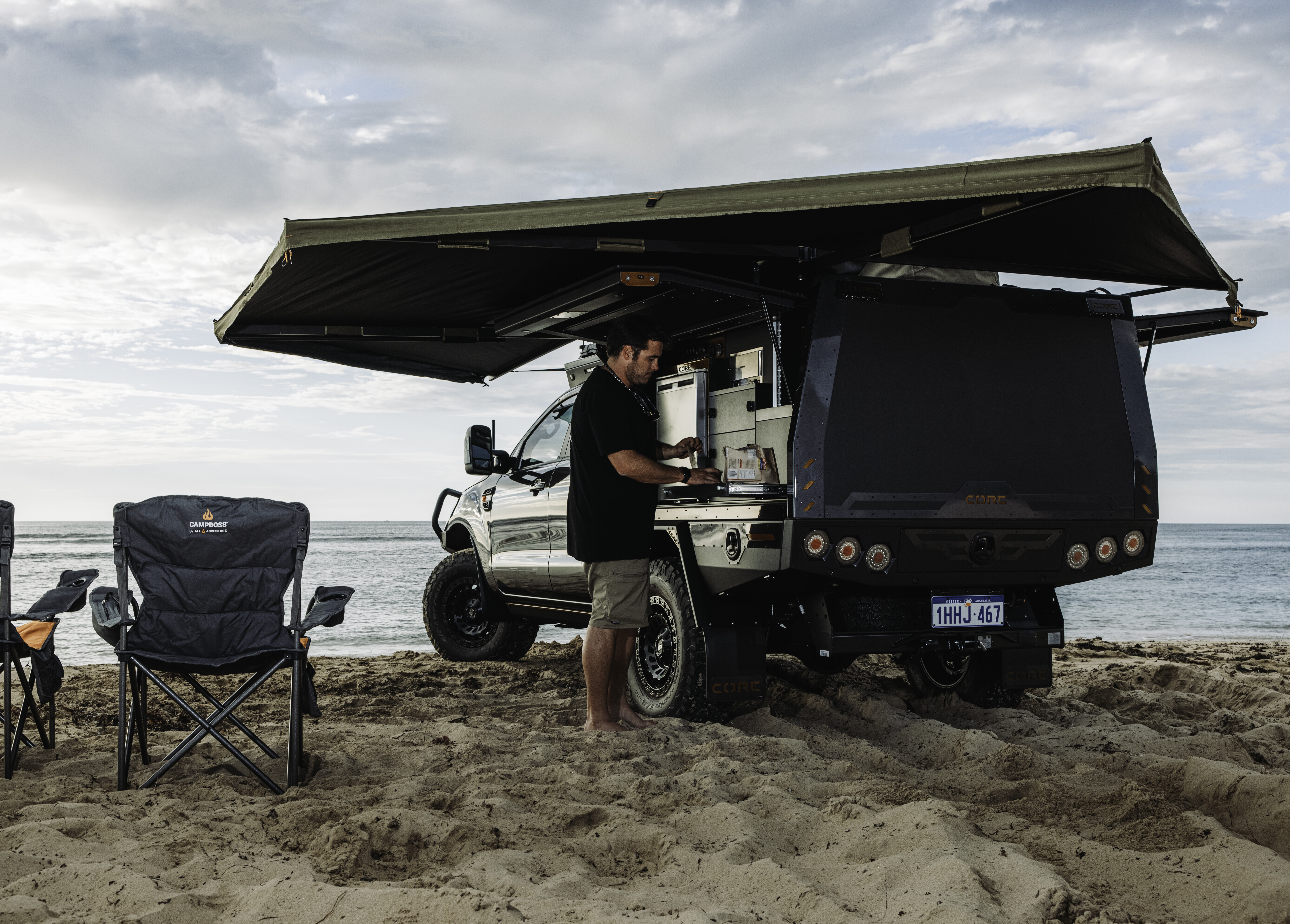
Bearing in mind the clean look Core was going for, and the interior being brand spanking new, few changes were needed in the cabin. These included a set of double denim SupaFit seat covers with an embroidered Core Offroad logo and colour-coded stitching. The GME UHF also cuts down on internal clutter with its display, and all controls are located within the hand-piece. Maintaining that clean look along the sills are Clearview motorised side-steps staying tucked away during driving, and only dropping down when using the Ranger’s doors. Keeping an eye on what is happening behind the canopy are a pair of Clearview extendable towing mirrors.
The 3.2-Litre turbo-diesel and six-speed auto driveline was left as Ford intended, but with a few upgrades to increase the GCM to 7000kg and GVM to 3500kg
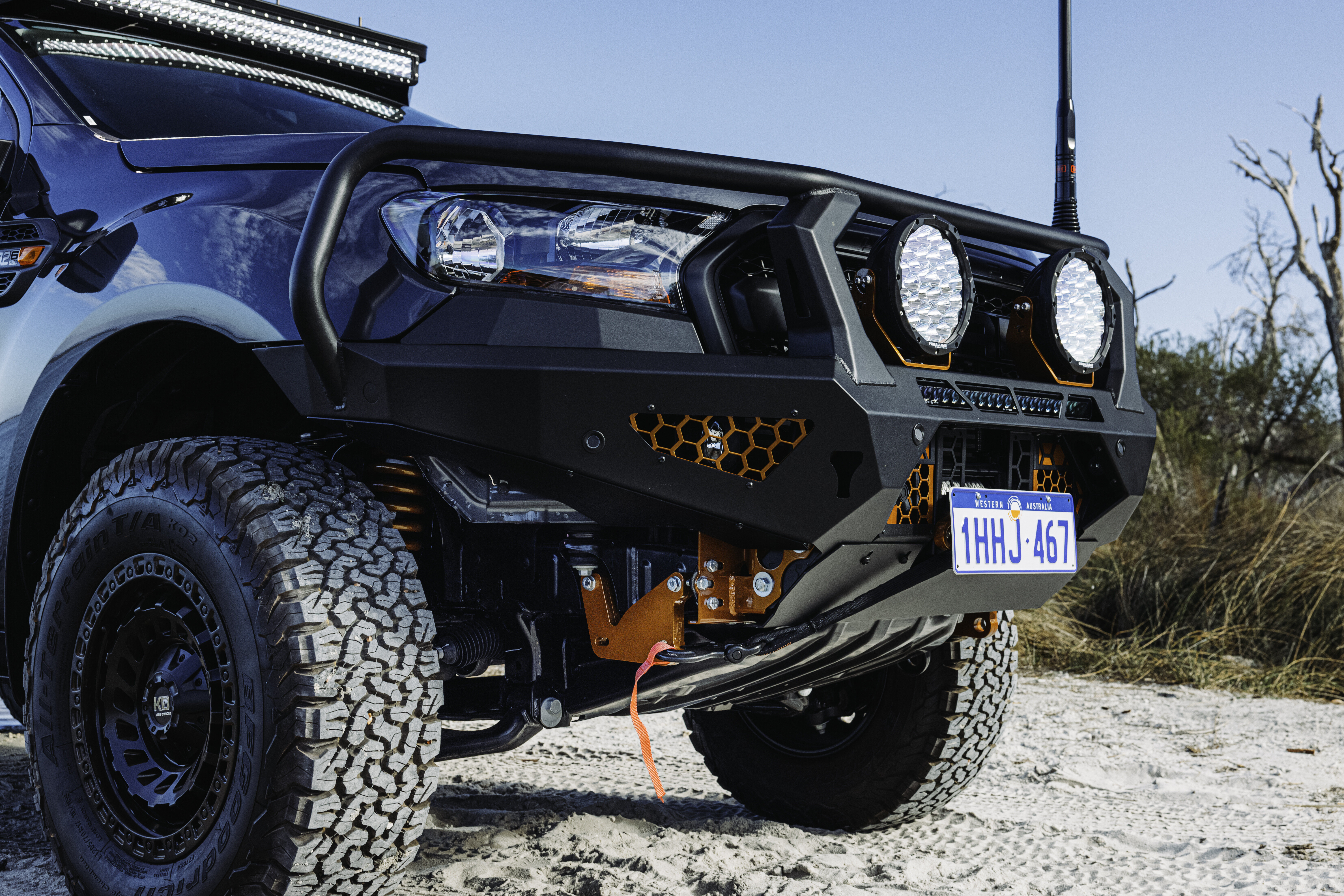
Extra storage is available across the Ranger’s roof with a Rhino Pioneer platform getting the nod, but when it came to mounting it, the team at Core decided to design their own backbone-style rail system which included on-road wind-noise testing. Starting with a basic design in aluminium, this was trialled while driving with sponges inserted in gaps to find ways of cutting down the wind noise. As Jimmy recalls: “Having too large a gap creates a wind rush, and too small a gap creates a whistle.” One of the changes being the kicked-in ‘wings’ located either side of the front light bar. The final design on the Ranger being made of stainless steel and powder-coated.
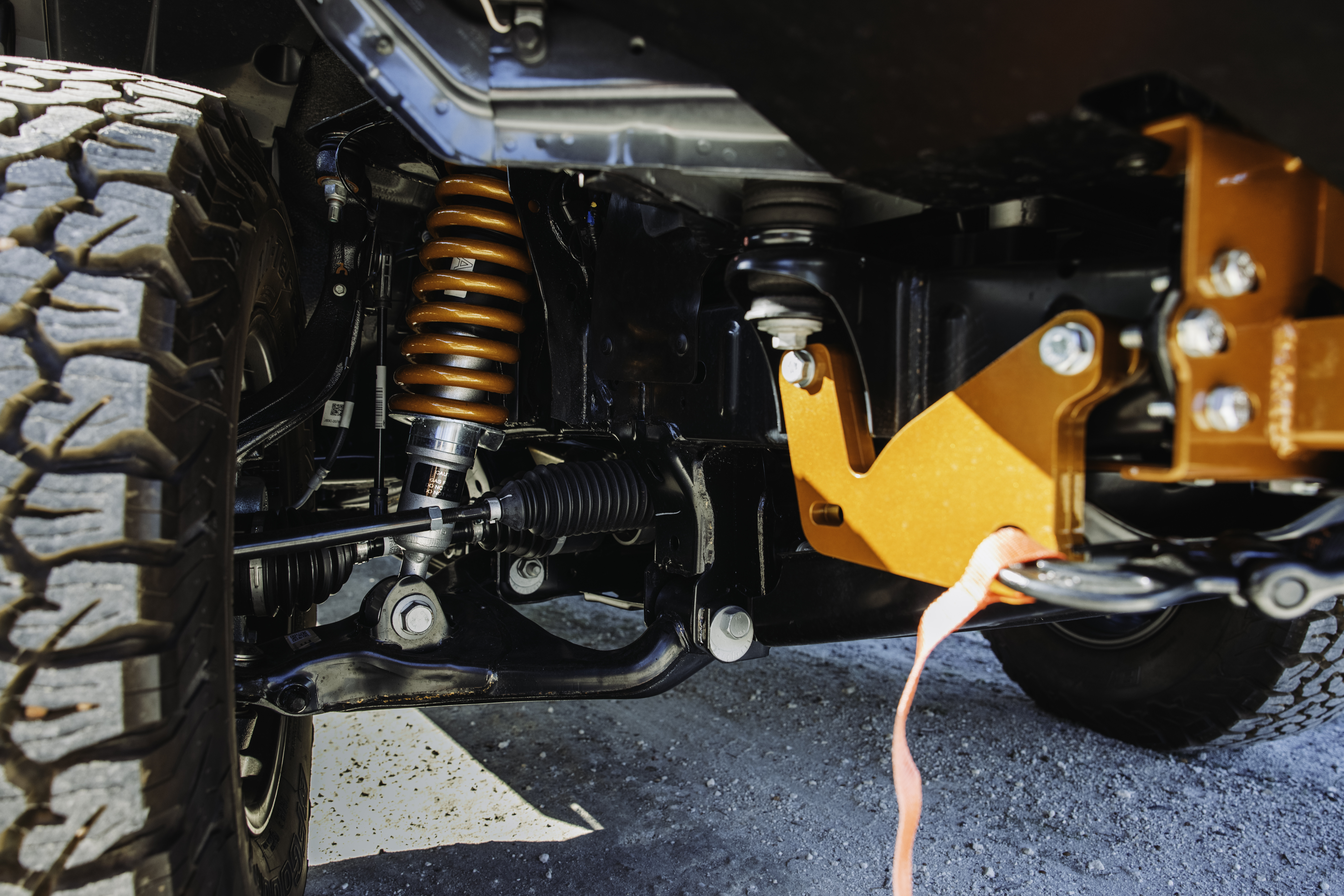
Also incorporated into the design is a swag of lighting, including Stedi RGB rock lights, four Stedi ST3520 work lamps, and a 42-inch Stedi STK4 light bar tucked up underneath the rack’s leading edge. Up top you’ll find a pair of Maxtrax, a colour-coded shovel and eArc 100W solar panel. Keeping your campers cool in the shade is a Falcon 270-degree awning from 23Zero, which is capable of throwing shade without the need to drop its support poles should the wind not be too outrageous. “It’s only 19 kilos, which is pretty light for a 270 these days,” says Jimmy. “Plus it has their new LST (Light Saving Technology) which doesn’t allow the light to come through the canvas.”
With the innovation that has come out of the Core Off-Road doors in just over a year of trading, it’s no wonder the Motor Trades Association of WA chose it for an unprecedented two awards in its recent 2021 awards night. Core Off-Road walking away with Off-Road Business of the Year, and Innovative Business of the Year.
To keep up with the options, upgrades and innovations, head to the Core Off-Road website at www.coreoffroad.com.au or, alternatively, visit its regularly updated YouTube channel, Core Off-Road, for walk-throughs and build vids.
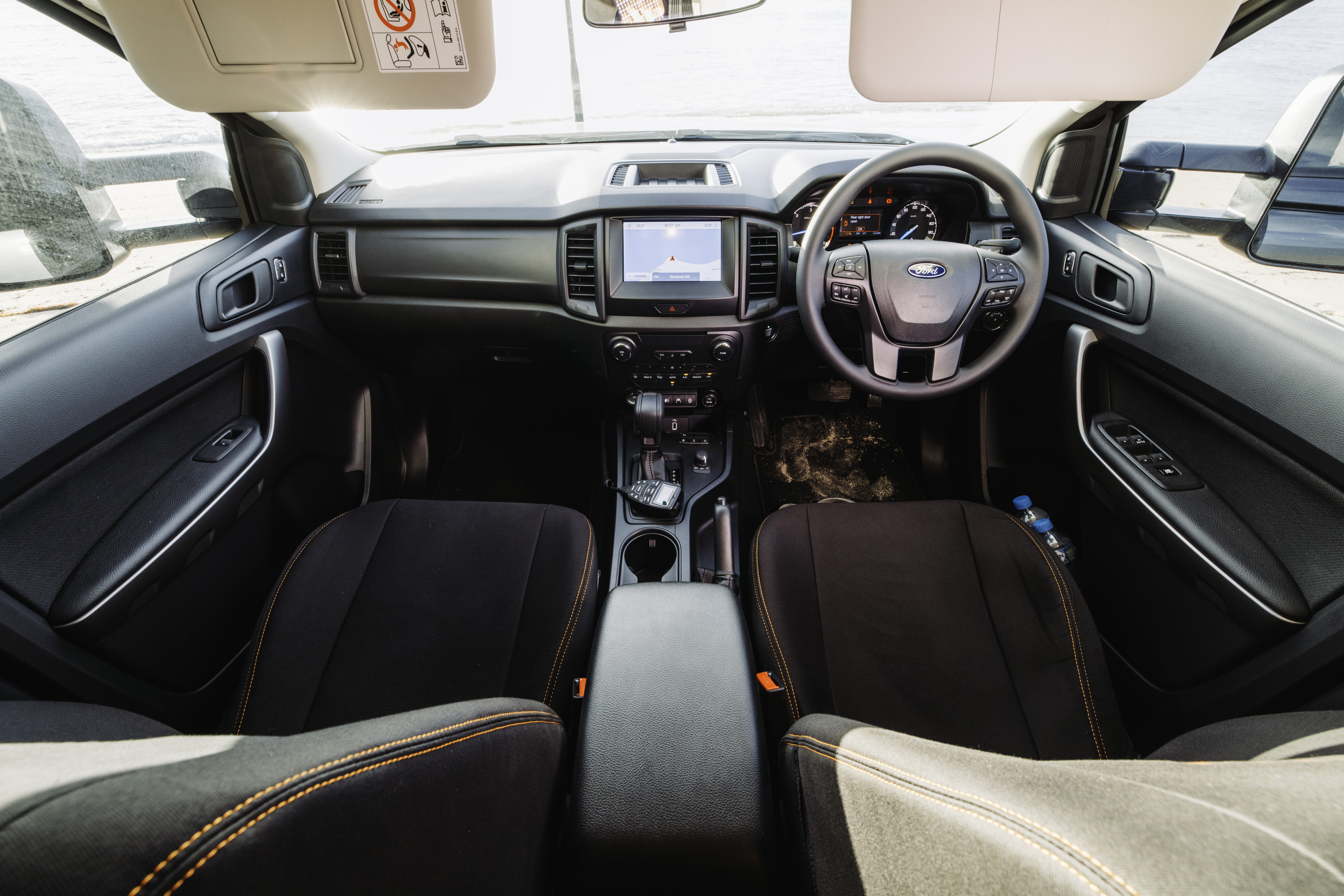
SO WHY HDPE, JIMMY?
“Plastic has next to no memory,” Jimmy tells us. “If hit with a hammer, the most you’re likely to do is mar the surface, as apposed to aluminium which will deform and hold its shape, and it takes about 200ºC of heat before it starts to deform that way. There are around 15 different manufacturers globally, and we use King StarBoard, out of Miami (USA). It’s been in the marine industry for 40-odd years, so it’s not a new product.
“With our process, we are able to do a 90º bend without deforming the outside. We end up with a 3mm radius bend on the outside on a half-inch sheet.
“Anything bolted into the plastic we use a thread insert, which ends up flush. With all of our testing, one M6 bolt is good for 300kg of pull, vertically up. With plastic it’s totally different to steel and aluminium. With metals the two parts can vibrate, and that’s when you start to have bolts come undone. But with plastic there’s no need to use anything like Loctite, because the material is so dense, vibration doesn’t affect it as the plastic doesn’t vibrate.”
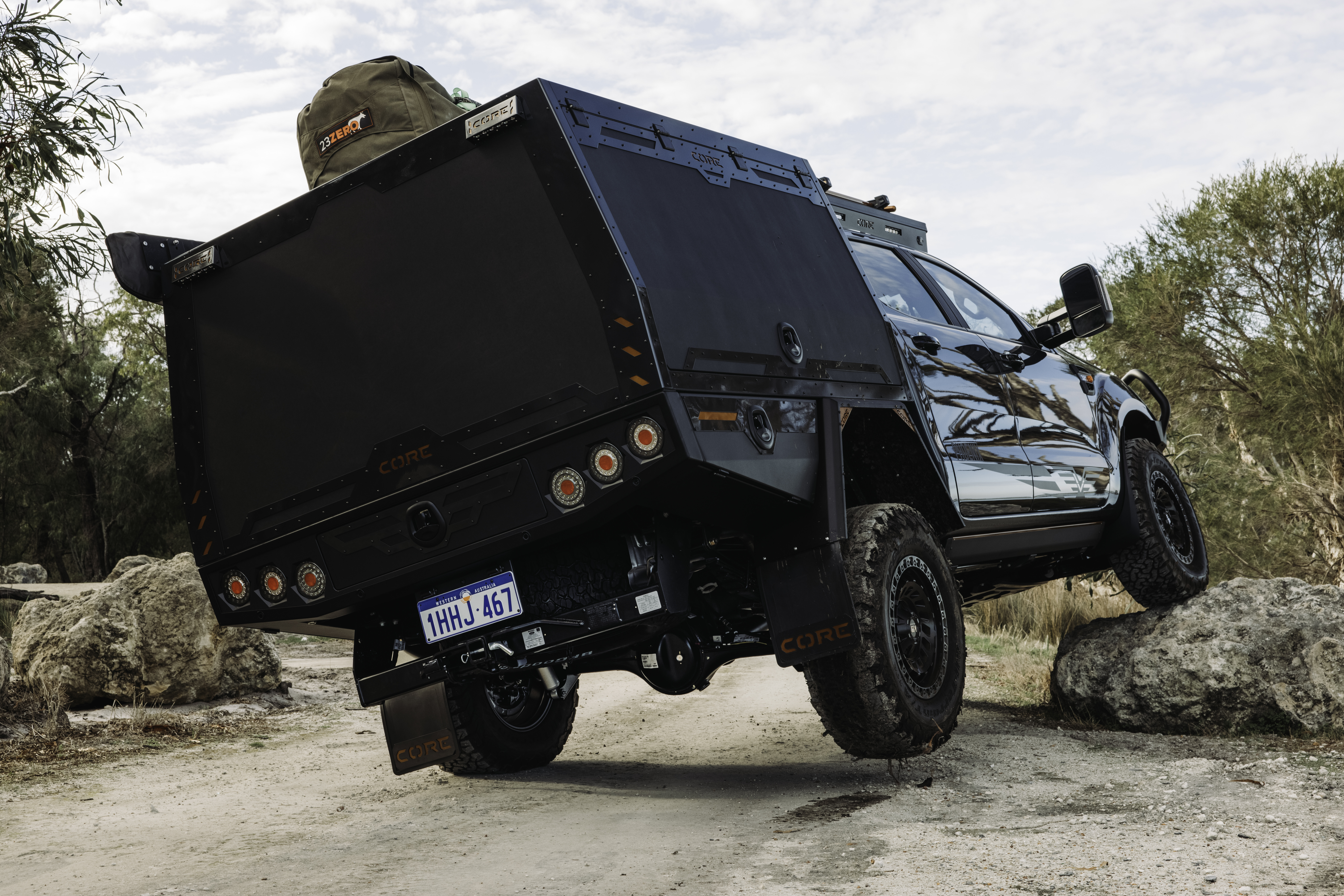
A CLOSER LOOK
1.Up she goes
There’s a Lovells GVM and GCM upgrade with 2-inch suspension lift.
2.Top light
A 42-inch Stedi STK4 light bar slots between the roof and rack.
3. Solar input
Rhino-Rack platform affixes a solar panel, Maxtrax and shovel.
4. Air hose
One of many inclusions is a 9-metre retractable air hose reel.5. Basket case
GTX Canopy gets a driver’s side fold-down storage basket.
We recommend
-
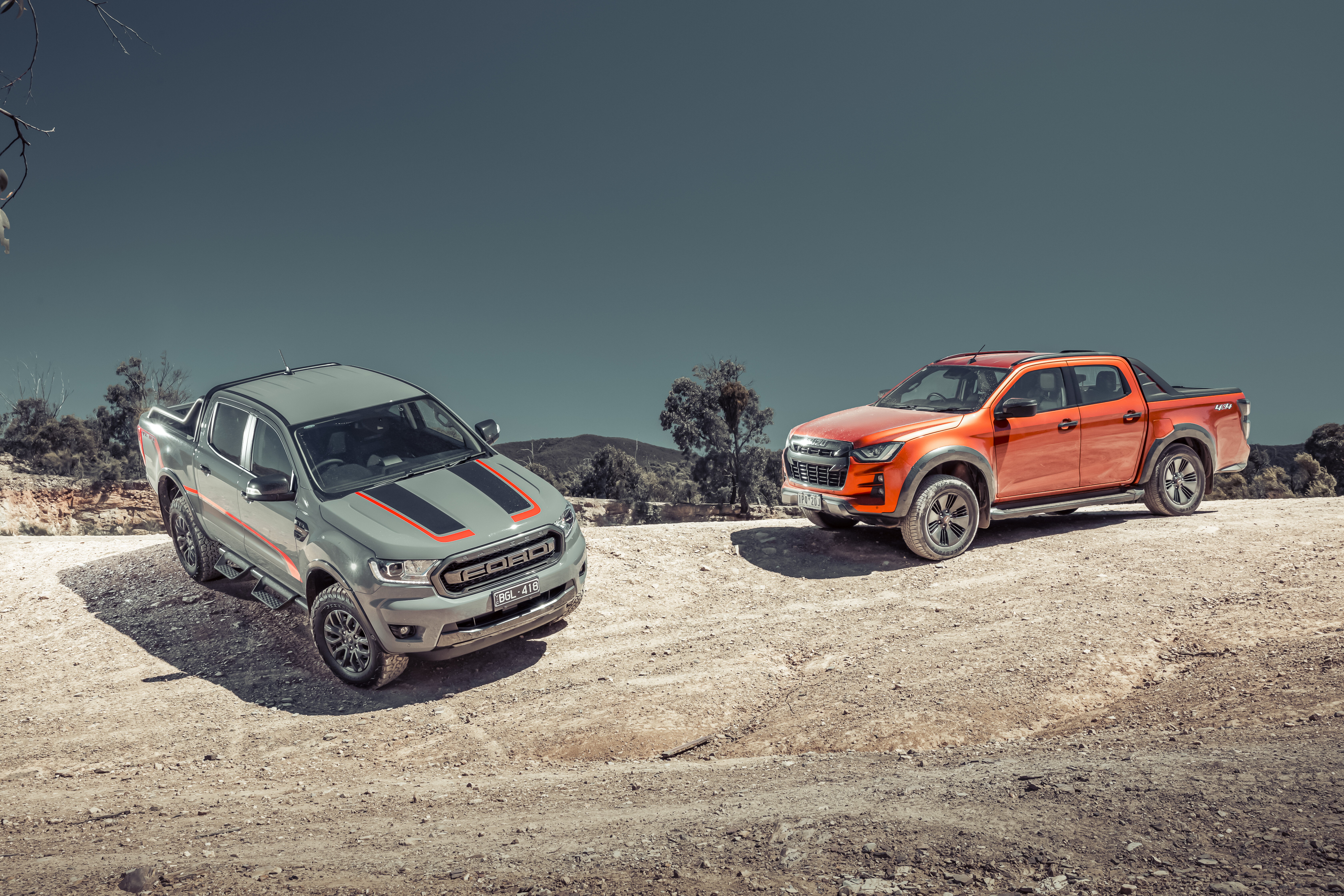 4x4 Comparisons
4x4 ComparisonsOff-road Test: D-MAX X-Terrain versus Ranger FX4 MAX
Style over substance or built for the job? We choose a winner when putting the Ranger FX4 MAX alongside the D-MAX X-Terrain
-
 4x4 Comparisons
4x4 Comparisons2021 Dual-cab ute megatest: Off-road comparison
We take 11 utes from Ford, GWM, Isuzu, Mazda, Mitsubishi, Nissan, Jeep, SsangYong, and Toyota, and put them through the ultimate off-road comparison test
-
 4x4 Comparisons
4x4 ComparisonsAll-new Isuzu D-MAX vs Ford Ranger Wildtrak
The next-generation D-MAX is finally here, but how does it shape up againt an established benchmark?

